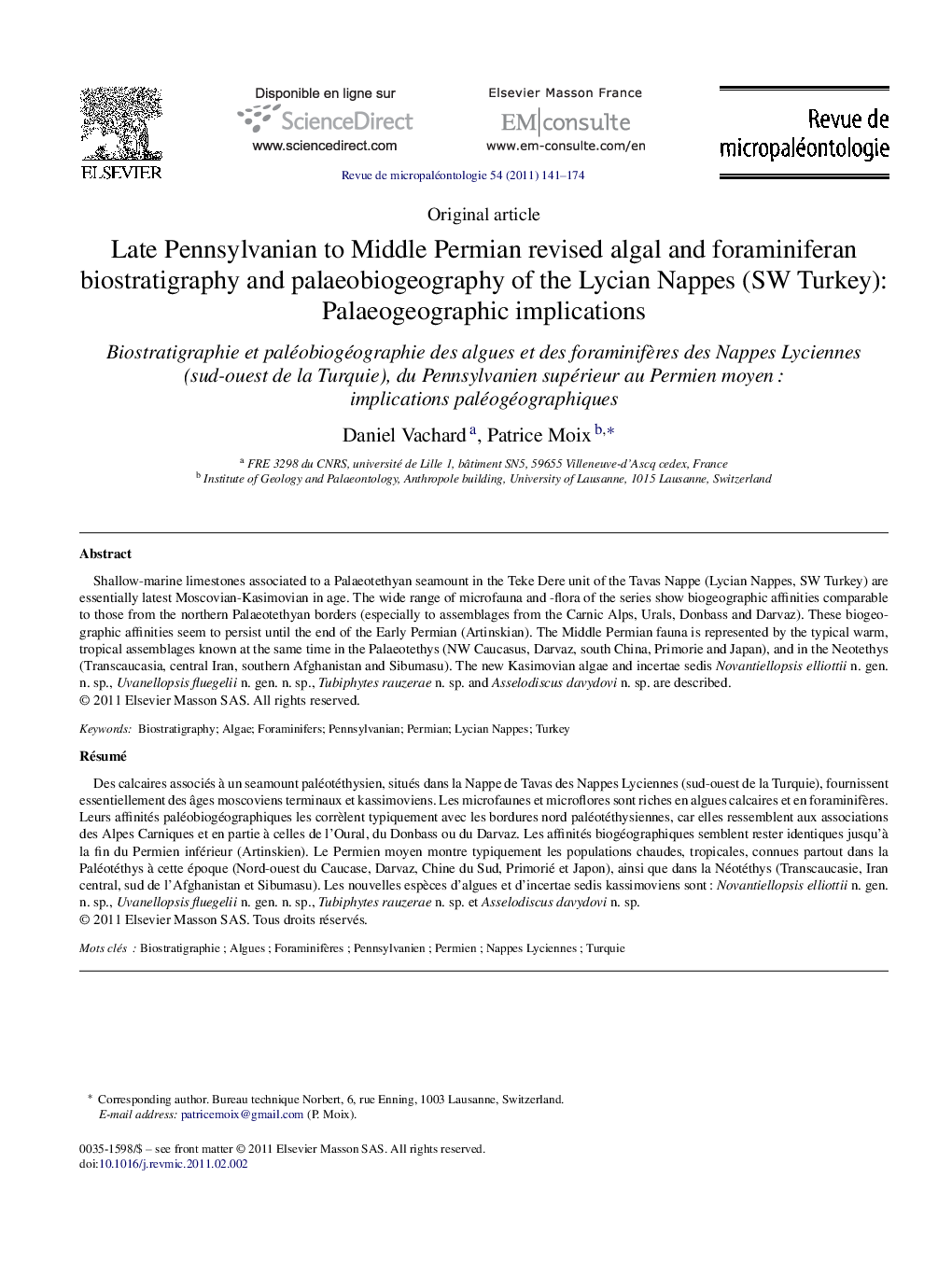| کد مقاله | کد نشریه | سال انتشار | مقاله انگلیسی | نسخه تمام متن |
|---|---|---|---|---|
| 4751474 | 1361069 | 2011 | 34 صفحه PDF | دانلود رایگان |

Shallow-marine limestones associated to a Palaeotethyan seamount in the Teke Dere unit of the Tavas Nappe (Lycian Nappes, SW Turkey) are essentially latest Moscovian-Kasimovian in age. The wide range of microfauna and -flora of the series show biogeographic affinities comparable to those from the northern Palaeotethyan borders (especially to assemblages from the Carnic Alps, Urals, Donbass and Darvaz). These biogeographic affinities seem to persist until the end of the Early Permian (Artinskian). The Middle Permian fauna is represented by the typical warm, tropical assemblages known at the same time in the Palaeotethys (NW Caucasus, Darvaz, south China, Primorie and Japan), and in the Neotethys (Transcaucasia, central Iran, southern Afghanistan and Sibumasu). The new Kasimovian algae and incertae sedis Novantiellopsis elliottii n. gen. n. sp., Uvanellopsis fluegelii n. gen. n. sp., Tubiphytes rauzerae n. sp. and Asselodiscus davydovi n. sp. are described.
RésuméDes calcaires associés à un seamount paléotéthysien, situés dans la Nappe de Tavas des Nappes Lyciennes (sud-ouest de la Turquie), fournissent essentiellement des âges moscoviens terminaux et kassimoviens. Les microfaunes et microflores sont riches en algues calcaires et en foraminifères. Leurs affinités paléobiogéographiques les corrèlent typiquement avec les bordures nord paléotéthysiennes, car elles ressemblent aux associations des Alpes Carniques et en partie à celles de l’Oural, du Donbass ou du Darvaz. Les affinités biogéographiques semblent rester identiques jusqu’à la fin du Permien inférieur (Artinskien). Le Permien moyen montre typiquement les populations chaudes, tropicales, connues partout dans la Paléotéthys à cette époque (Nord-ouest du Caucase, Darvaz, Chine du Sud, Primorié et Japon), ainsi que dans la Néotéthys (Transcaucasie, Iran central, sud de l’Afghanistan et Sibumasu). Les nouvelles espèces d’algues et d’incertae sedis kassimoviens sont : Novantiellopsis elliottii n. gen. n. sp., Uvanellopsis fluegelii n. gen. n. sp., Tubiphytes rauzerae n. sp. et Asselodiscus davydovi n. sp.
Journal: Revue de Micropaléontologie - Volume 54, Issue 3, July–September 2011, Pages 141–174